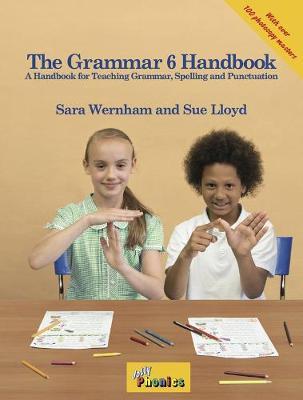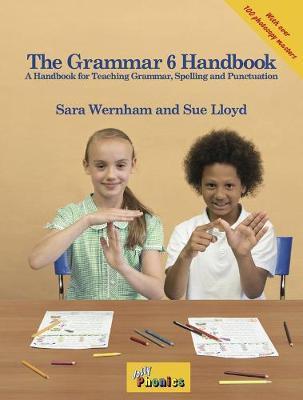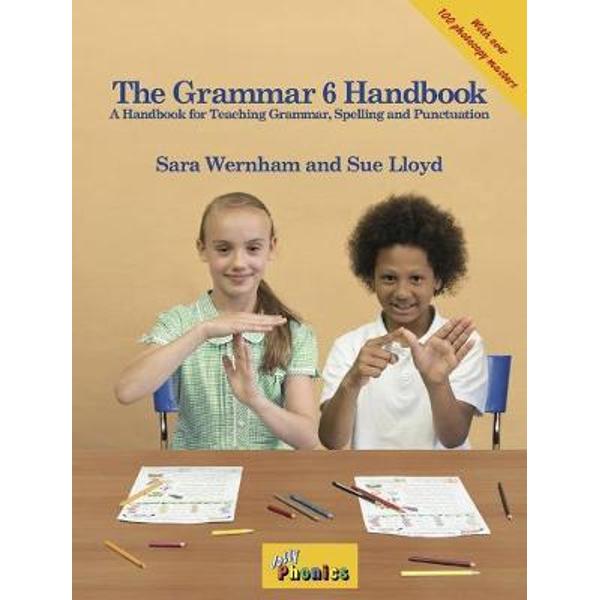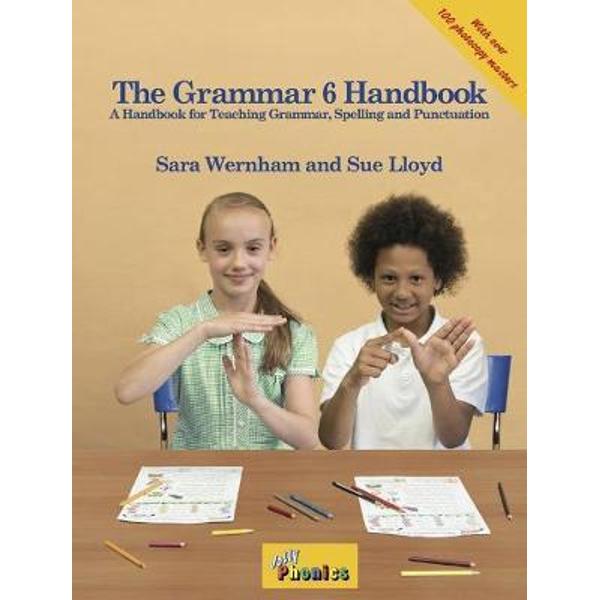Grammar 6 Handbook
Grammar 6 Handbook
The Grammar 6 Handbook contains 36 spelling and 36 grammar and punctuation lessons for a fully year of teaching children aged 10-11 years. The lessons continue to build upon the knowledge and skills that children have been taught in previous years. There are detailed lesson plans for the teacher to follow, along with a photocopiable sheet that children can complete in class or as homework.
Topics covered within The Grammar 6 Handbook include: prefixes & suffixes, in particular numerical; silent letters (bt, te, th); new spelling patterns/rules (ough); schwas (-ity & -ety); more alternatives (they, great, ballet, fete, straight for /ai/); new parts of speech (for example, countable and uncountable nouns, gerunds and modal verbs and imperatives); further punctuation (using semi colons and colons or using a comma after a fronted adverbial); developing a greater understanding of sentence structure and learning to recognise indirect objects, subject complements and passive agents; and introducing children to literary devices such as alliteration, learning to meaning of idioms and distinguishing between formal and informal writing.
PRP: 331.50 Lei
Acesta este Prețul Recomandat de Producător. Prețul de vânzare al produsului este afișat mai jos.
265.20Lei
265.20Lei
331.50 LeiLivrare in 2-4 saptamani
Descrierea produsului
The Grammar 6 Handbook contains 36 spelling and 36 grammar and punctuation lessons for a fully year of teaching children aged 10-11 years. The lessons continue to build upon the knowledge and skills that children have been taught in previous years. There are detailed lesson plans for the teacher to follow, along with a photocopiable sheet that children can complete in class or as homework.
Topics covered within The Grammar 6 Handbook include: prefixes & suffixes, in particular numerical; silent letters (bt, te, th); new spelling patterns/rules (ough); schwas (-ity & -ety); more alternatives (they, great, ballet, fete, straight for /ai/); new parts of speech (for example, countable and uncountable nouns, gerunds and modal verbs and imperatives); further punctuation (using semi colons and colons or using a comma after a fronted adverbial); developing a greater understanding of sentence structure and learning to recognise indirect objects, subject complements and passive agents; and introducing children to literary devices such as alliteration, learning to meaning of idioms and distinguishing between formal and informal writing.
Detaliile produsului













